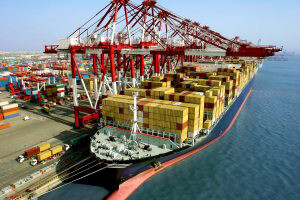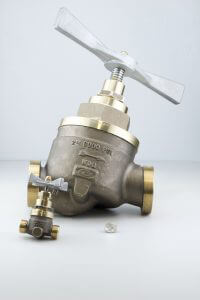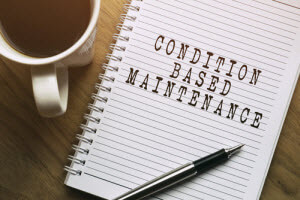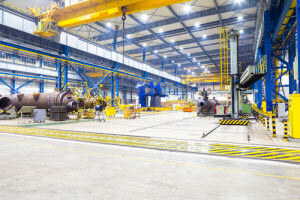The Ultimate Guide to Keeping Valve Components Safe in Cold Weather
Oil extraction facilities, refineries, and buildings have a weak link. The weakest link in any extraction facility is its valve components. Because when it’s cold outside, it’s not unusual for processing plants, oil extraction facilities, and other like industries to weatherize their plant.
Many people used to call the weatherization process heat tracing. But today’s engineers know it is essential to take care of valve components in preparation of any weather extreme. It takes much more thought than ever before to implement any winterizing process.
The informational guide below will go over the best ways to keep the valve and valve components safe from the cold.
Valve Components
You already know that valves have globe valve symbols which are designed to help you prepare your entire plant’s system design plans. Your facility’s design documentation includes criteria you need to know and follow for valve component isolation.
The set-up design documentation should include:
- Requirements for intrusive plant operations
- Requirements for access into equipment for inspection and maintenance
- Details on valve isolation arrangements as well as valve types, spacers/spading points, and more
It’s during the design set up you want to include your test points, drains for venting, and any valve purging that may be needed during extreme situations.
Valve Function
You may already understand the importance of valve components in a pipeline system. Valve functions along a pipeline system are to control the rate, speed of flow and the pressure of various content. It is the valve function that gives facilities added information on the process conditions.
Valve Protection
The ultimate goal when you’re treating valves that need heat trace or process heating during cold weather is to protect the valve. You need to protect the valve components and the valve’s function too. When you use heat trace you are maintaining the heat within a pipe, valve or component.
Process heating is when you maintain a targeted temperature as you drive heat processes towards your valve and valve components. This may entail preventing condensation or even providing extra heat in flow lines.
To-Do-List to Keep Valve Components Safe from Cold
Frigid weather and freezing fluid in your control valves can shut down your facility. Here are some helpful tips to prevent your valve and valve components from freezing. The list includes, but is not limited to:
- Breather plugs on back pressure regulators or any equipment you use for production that uses breather plugs are face down. This helps prevent freezing moisture get inside the valve components.
- You can inject methanol into gas streams to help prevent freezing of valves and valve components.
- The body of your valve is especially vulnerable to the cold. Using a flameless heater keeps the body of the valve warm. Flameless heaters have hinged doors so you can access the valve when needed.
You want to make sure your treater valves have the needed tubing, and it runs downhill. Also ensure the tubing and line are no more than a 90-degree slant.
Valve Assistance
No two industries have the same needs from their valve components, yet efficiently winterizing can save all industries an interruption in their services or product. You now know how vital your valve components are and how to keep them from freezing up and disrupting your operations. If you need any information or have questions about your valves or the weatherization process, reach out to us.
Our services help maximize your profit in healthy uptime.


 Before installing new valves or equipment, or before a new plant is constructed or goes online, the pipes and equipment should be cleaned or flushed. Particles of debris can clog or damage the valves. Commissioning equipment before starting operations will significantly reduce the risk of damaging the valves or system. It will also help guarantee the valves’ performance, especially their ability to shut off tightly and open quickly at the appropriate times. It will help to protect your equipment and ensure that once the facility is up and running or operations resume, it will remain in operation.
Before installing new valves or equipment, or before a new plant is constructed or goes online, the pipes and equipment should be cleaned or flushed. Particles of debris can clog or damage the valves. Commissioning equipment before starting operations will significantly reduce the risk of damaging the valves or system. It will also help guarantee the valves’ performance, especially their ability to shut off tightly and open quickly at the appropriate times. It will help to protect your equipment and ensure that once the facility is up and running or operations resume, it will remain in operation. That’s where a valve asset management system comes in…a record-‐keeping system specifically for valves. It can be compared to a medical records system where a valve is the equivalent of a patient and the plant manager is the doctor. A good asset management system holds every morsel of information about a valve’s past “health.”
That’s where a valve asset management system comes in…a record-‐keeping system specifically for valves. It can be compared to a medical records system where a valve is the equivalent of a patient and the plant manager is the doctor. A good asset management system holds every morsel of information about a valve’s past “health.” A skills gap refers to the difference in the skills required for a job and the actual skills a potential employee has. A skills gap in manufacturing can cause a number of issues for many companies. However, the biggest concerns caused by this ongoing problem are worker shortages and the inability to meet consumer demands.
A skills gap refers to the difference in the skills required for a job and the actual skills a potential employee has. A skills gap in manufacturing can cause a number of issues for many companies. However, the biggest concerns caused by this ongoing problem are worker shortages and the inability to meet consumer demands. Because it’s gotten so difficult to find qualified employees, businesses have had trouble keeping up with and fulfilling consumer demands. With a lack of skilled employees, productivity can decline and lead to slower production times, increased operation costs, and other performance issues.
Because it’s gotten so difficult to find qualified employees, businesses have had trouble keeping up with and fulfilling consumer demands. With a lack of skilled employees, productivity can decline and lead to slower production times, increased operation costs, and other performance issues. Condition-based maintenance (CBM) uses data collected from a system to calculate exactly when it needs maintenance. It essentially helps companies provide services on an as-needed basis based on the condition of the system rather than a specific time frame. Companies use CBM to reduce overall repair expenses, prevent unnecessary downtime, and extend the longevity of parts and systems in their plants.
Condition-based maintenance (CBM) uses data collected from a system to calculate exactly when it needs maintenance. It essentially helps companies provide services on an as-needed basis based on the condition of the system rather than a specific time frame. Companies use CBM to reduce overall repair expenses, prevent unnecessary downtime, and extend the longevity of parts and systems in their plants. However, a supply chain is only successful when it’s developed and implemented properly. So to ensure that your business’ supply chain is designed to yield the best results, here’s how to develop an effective supply chain strategy for your small business.
However, a supply chain is only successful when it’s developed and implemented properly. So to ensure that your business’ supply chain is designed to yield the best results, here’s how to develop an effective supply chain strategy for your small business. Next, review the assessment to see what you can do to implement your supply chain strategy into your business. Consider all recommendations outlined as well as the risks that could occur when the strategy is implemented.
Next, review the assessment to see what you can do to implement your supply chain strategy into your business. Consider all recommendations outlined as well as the risks that could occur when the strategy is implemented. Performing this type of analysis is simple, but to make sure that you do it correctly, we’ve provided a list of steps that you should follow.
Performing this type of analysis is simple, but to make sure that you do it correctly, we’ve provided a list of steps that you should follow.
 Uncovering otherwise overlooked data can help manufacturing plants understand certain costs or reasons that they’re being inefficient. Using tools to monitor what you’re spending money on and how much, as well as data reporting to collect and analyze this information, can help you uncover hidden costs. There are different methods to learn about these costs, and it’s important to find the one that’s right for your business.
Uncovering otherwise overlooked data can help manufacturing plants understand certain costs or reasons that they’re being inefficient. Using tools to monitor what you’re spending money on and how much, as well as data reporting to collect and analyze this information, can help you uncover hidden costs. There are different methods to learn about these costs, and it’s important to find the one that’s right for your business. Paul Twite of 24-7 Power, an electrical consulting and engineering service company,
Paul Twite of 24-7 Power, an electrical consulting and engineering service company,